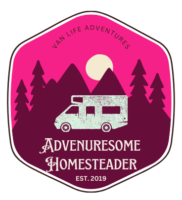Last Updated on June 23, 2024 by Nikole
Whether you are a weekend warrior or a full-time camper van traveler you will need water for activities such as taking showers, washing dishes, or spraying off equipment.
Installing a water system isn’t as intimidating as it seems, with a few resources you will be well on your way to a great water system in your van.
This post may contain affiliate links, which means I’ll receive a commission if you purchase through my links, at no extra cost to you. Please read full disclosure for more information.
Do you need a camper van water system?
Water is an essential part of everyday life, so you will need to plan.
Washing dishes, showering, drinking, cooking, and washing equipment are all activities you will need water for.
Will you need a whole water system, or will you need a 5-gallon water tank for the weekend?
Long Haul

If you plan to live it up in your camper van you should consider installing an entire system with a few water tanks, a pump, and maybe even a water heater.
Odds are, when living in a camper van, you will need items like a sink and shower which will take up much of your water supply.
One way to save water is to use a composting toilet, then you won’t have to install a black water tank.
Read more about other types of camper van toilets here.
Short Term Weekend Traveler
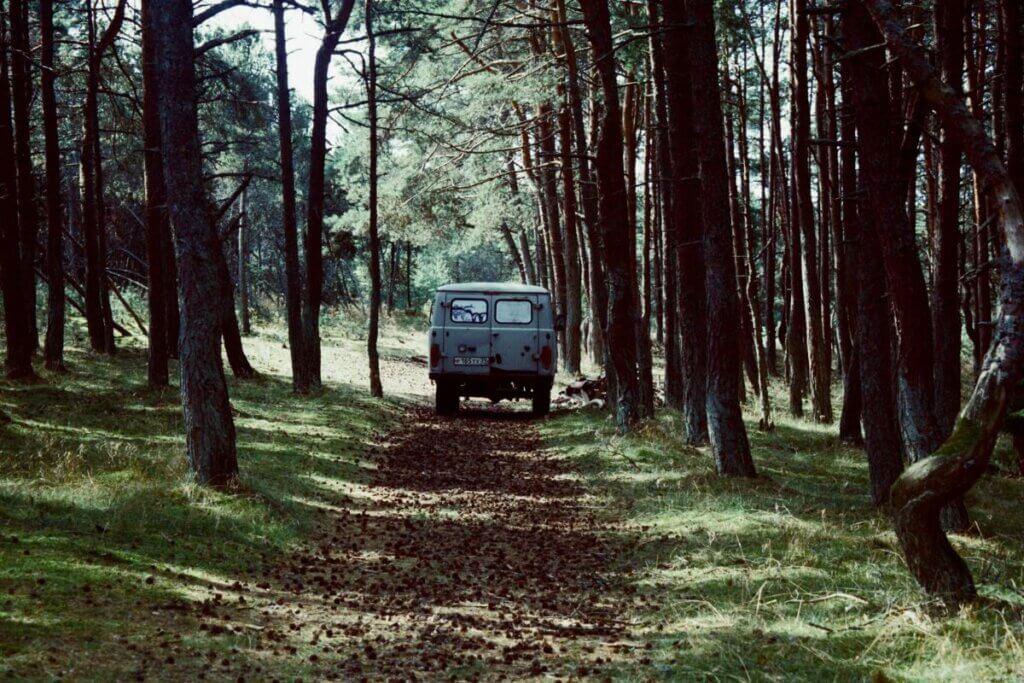
If you are traveling it up on just the weekends you can get away with using a 5-gallon water tank and a simple manual hand pump for all your needs.
We have a small Ford Transit Connect and we have no use for a water system (and no room).
Most of the time we used the water at campgrounds and that seemed to do the trick. However, when we did free camp we brought along a 5-gallon water tank for washing hands, taking showers, and washing dishes.
How Does a Camper Van Water System Work?
There are quite a few items you will need for your camper van water system to flow smoothly and those include:
- Water pump
- Tanks
- Water Heater
- Pipes
- Fittings
- Surge Dampers
- Inline Contaminate Filters
Here is the basic diagram locating where each part should connect. Keep in mind this is basic and you can add more to your system if necessary.
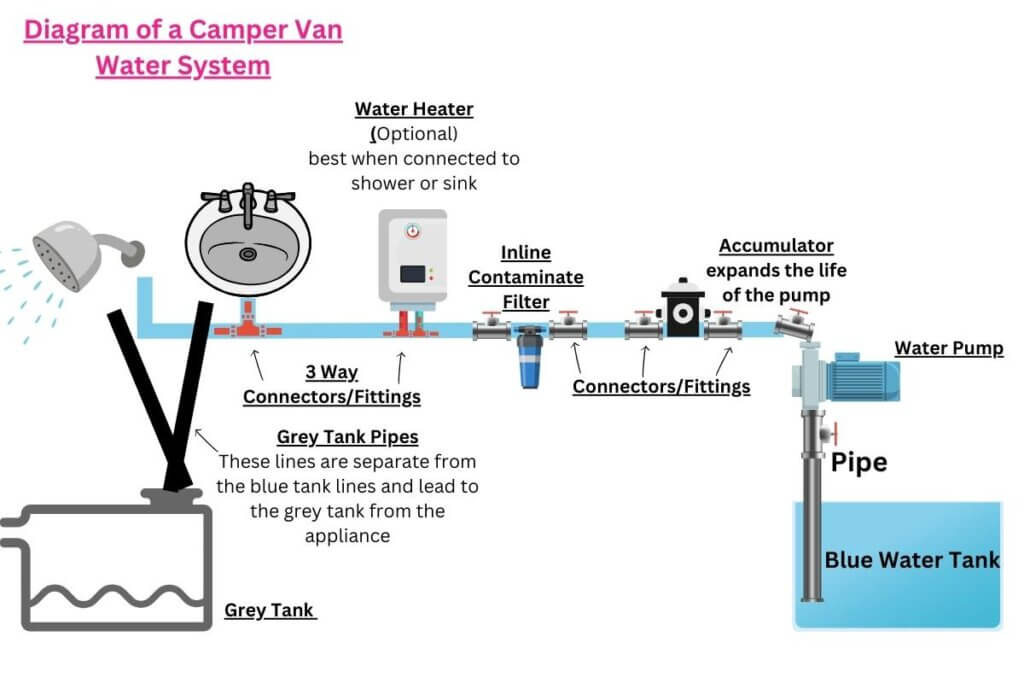
Tanks
There are so many water tanks on the market, and you will find one to fit your lifestyle. If you need space look for ones that can be placed around the wheel well, or on the roof rack. You can purchase 5-gallon ones for weekend trips, or a large capacity for full-time van life.
Blue Water Tank
The tank for your blue water is known as your water supply. This tank holds all the water you will use for showers, washing dishes, etc.
Make sure to get a big enough tank for what you plan on doing.
Here is a table I made up for RV sewage systems, however, this will also help you measure how much water you will need for your camper van water tanks.
We get away with using a 5-gallon water bottle on our weekend getaways, but when we lived full-time in a camper we had a larger capacity need.
Typically van lifers will use between 1 and 5 gallons per day, depending on shower lengths, dishes washed, and spraying off equipment.
What size tank Should You Get?
Grey Water Tanks
The grey water tank is where water from your sink will go. Basically, anything that isn’t waste water will empty into this tank and hold it until you find a place to dump it.
I recommend getting a water tank that is slightly larger than your blue water holding tank, that way you can prevent overflow. You can also install a sensor to know when to dump the tank, however, sensors can mess up from time to time and can’t always be trusted
Black Water Tanks
Black water tanks hold your waste from your toilet. However, If you have a cassette toilet or a compost toilet there’s no need for a black holding tank because there are other ways of cleaning these chemical toilets.
I believe most van lifers do without a black tank because it is less weight to haul around.
Water pump
Pumps the water from your tank, through the pipes, and to the sink (hose or shower).
There are two pumps you can buy: automatic and manual.
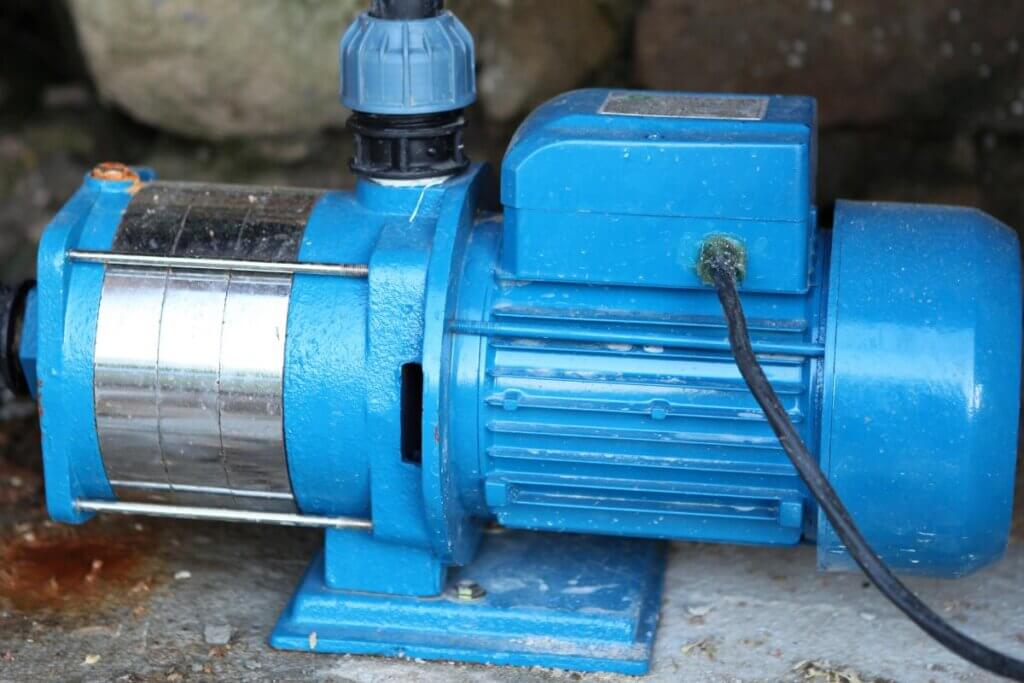
Automatic pumps are best used for a built-in, permanent, camper van water system and on full-time camper van homes.

Manual pumps are best for removable water tanks, such as the small 5-gallon ones we use (like this Coleman 5-gallon tank) on weekend getaways. Manual pumps are a bit harder to use especially when washing dishes and taking showers.
Accumulator
This Kingdder accumulator device is mainly for expanding the life of your pump by preventing the pump from starting. It also helps with noise dampening, less amp draw, and reduction in water pulsation.
You don’t necessarily need this device, but it does help to have it.
Heater
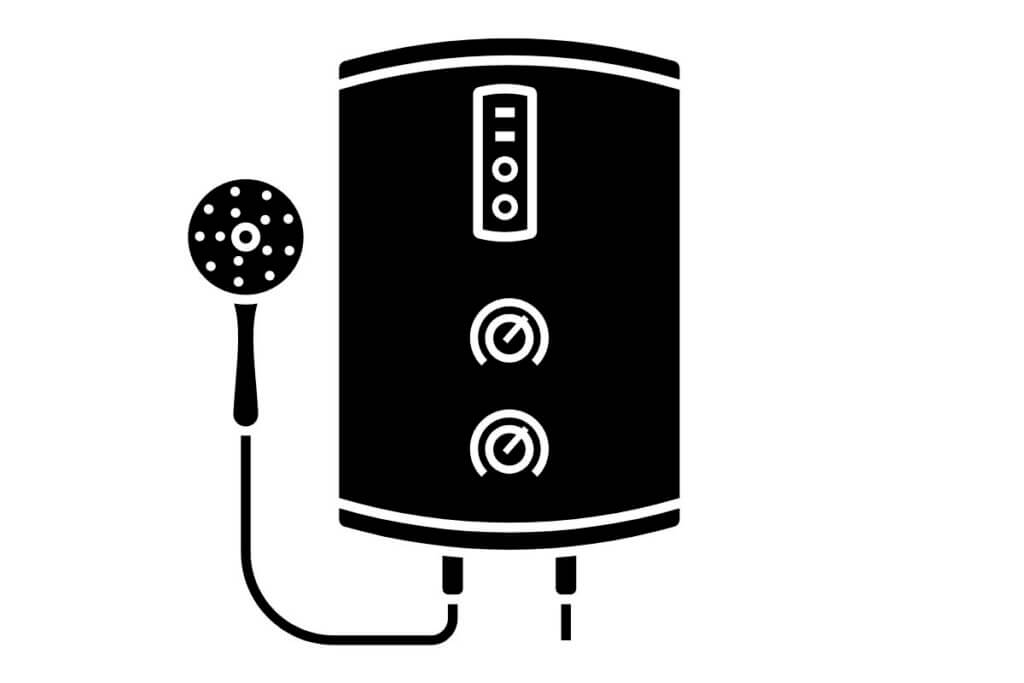
There are several ways to heat water in a camper van, in fact, we wrote a post about camper van water heaters so you can find the perfect one. These will pump the water through the system and leave you with hot water for a comfortable shower or clean dishes.
Pipes and Fittings

You will need pipes and fittings for transferring water from the water tanks to your sink, shower, and other plumbing devices.
These items are only needed if you have a camper van water system and permanent tanks. You will not need these if you have a manual pump.
There are two main types of pipe systems you can look into:
- Flexible Hose
- Push Fit
Flexible Hose
Flexible hose pipes are considered food-grade transportation for your camper van water system. These are the most flexible options, but may not be as durable as the push-fit option.
When shopping for these fittings look for a few things:
- High-temperature threshold especially if you have a water heater
- Long Service life, so you don’t have to replace them for a while
- Around a 12mm thickness
- Clear piping so you can see if the system needs cleaning or unclogging.
Push Fit
Push-fit pipes are an easy-connect option and come in all sorts of materials such as:
- Copper
- Plastic
- Stainless Steel
- Brass
This option of piping is best for those who need a sturdier option than the flexible hose.
Inline Contaminate Filters
Filters for your camper van water system are a must for keeping your water clean and safe for drinking. Thankfully they are easy to install by screwing it directly on the inlet portion of your water pump.
Water Inlet
A water inlet goes on the outside of your camper van and connects to the water tank through a hose.
This device makes it easier to fill your permanent, or fixed, water tank.
Shop some of the best water inlets for your camper van.
If you want your van to be in “stealth” mode, then go with a tank you can fill on the inside of your van.
Where to Put Your Water System
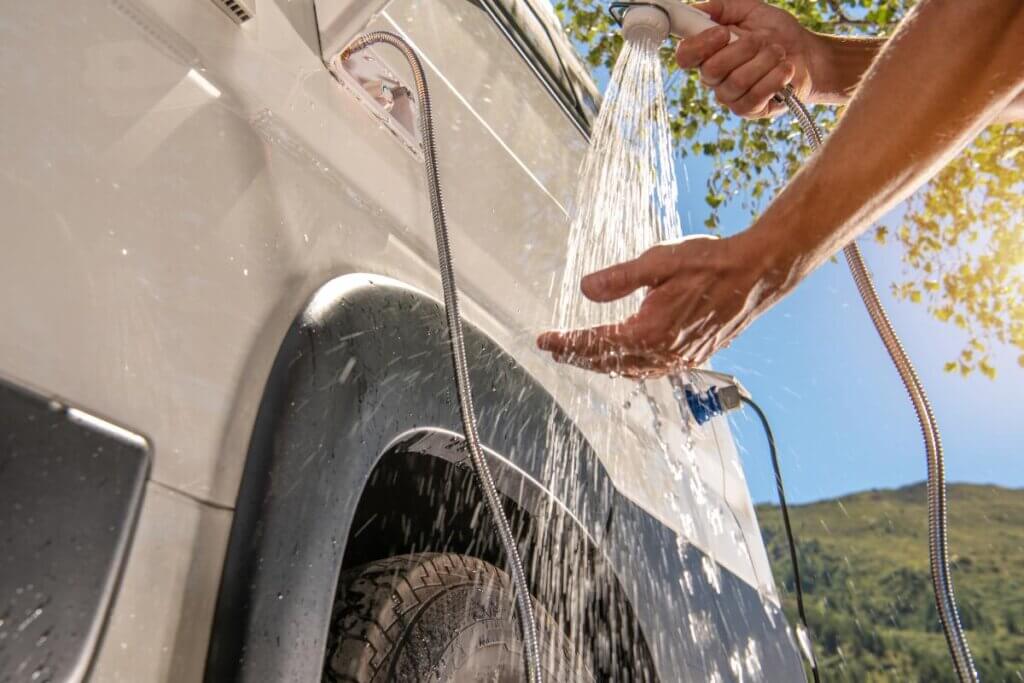
Your water tank can be placed in many different areas of your camper van. You can leave space for it under your bed, around your wheel well, on top of your camper van, or even below your van.
Inside vs. Outside
placing your camper van water system is possible on the outside or inside of your camper van.
Your current setup matters when considering where to place water tanks. If you have a small van I recommend placing your tanks on the outside of your van (either underneath or on top of your roof rack)
If you have a large camper van the most common placements are under the bed, sink area, or wheel well.
You can even purchase a wheel well water tank, Like this one from Nomadicsupply, for your camper van water system, which is a real space saver.
Also, consider the weather when placing your tanks. Cold weather may freeze your water during the winter months, so it may be best to keep the tanks on the inside.
In Conclusion
Water is a necessary thing to have on all traveling adventures and it’s important to have enough for the length of your trips. Please let me know in the comments how you built your water system or if you have any other ideas for a camper van water system.
